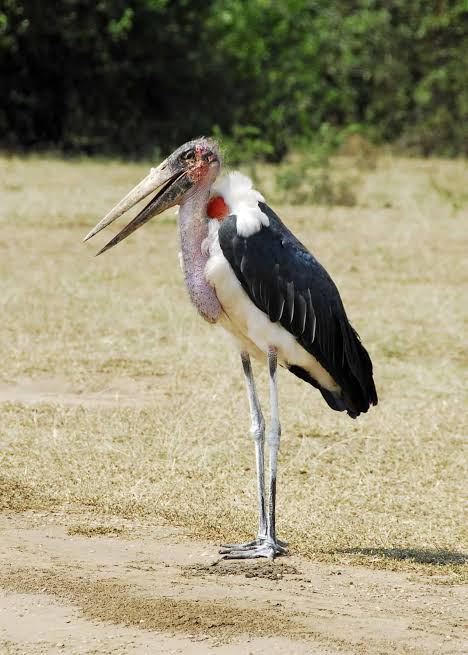
This is a continuation of the previous article on some of the world’s ugly animals. This piece features a bird, an amphibian, a fish, and a lemur. Ready for yet another batch of repugnant images? Maybe even the stuff of nightmares? Scroll on to find out!
Marabou Stork:
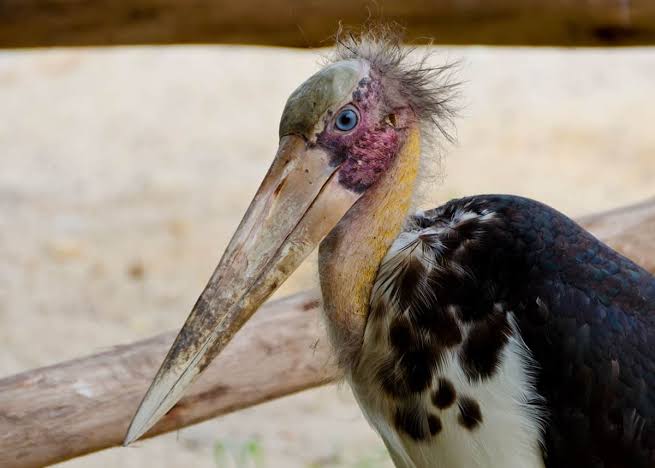
Yet another bird on this list of ugly animals. Except this one is worse, at least in my opinion😂.
The Marabou stork is a tall bird with black feathers and white slender legs. These birds are usually about 5 feet tall, with a 12 ft wingspan – one of the largest among birds. Hence, they are big birds. They also have what appears to be hair (Yes. Hair!) on their head – an unusual feature among birds. Their large bills, the pink gular folds around their necks, and scabby heads are also hard to miss. They are a major part of the reasons they appear so repugnant, after all. It is also noteworthy that their appearance has led many to dub them “undertaker birds”.
Another reason for their bad rep is that they exhibit behaviors as nasty as their looks. For example, they squirt excrement on their legs to cool them down. It is why their legs are whitish. Ideally, their legs are gray-colored. They also feed on garbage, carrion, and if they get the opportunity, small birds, snakes, and even human waste. It’s noteworthy that they exhibit an interesting symbiotic relationship with bees.
These birds are native to Uganda, South Africa, and Namibia, among other places. They are the unofficial national animals of Uganda.
Monkfish:
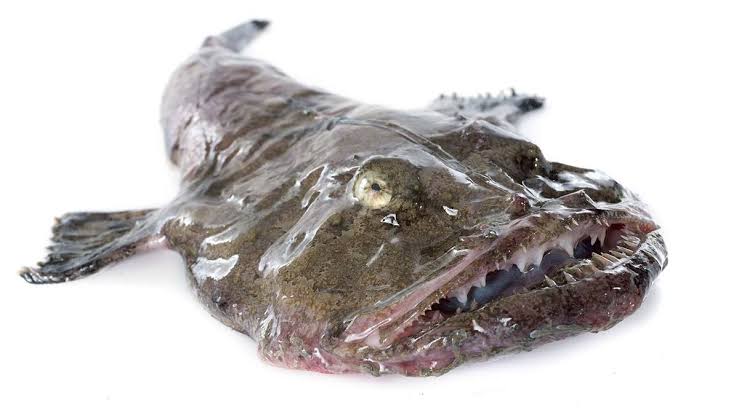
The monkfish is colloquially known as the poor man’s lobster. This is because of the similarity of its taste to that of lobster. However, it appears that may be the only appealing thing about them. Why? There is no ignoring their fearsome, ugly appearance – and apparently, their other (sinister) name. These fishes belong to the genus Lophius, and members of this group are also known as sea devils.
Their mottled, “scaleless” skin, weird flat body shape, jaws with fearsome teeth, and the “fishing rod” appendage on their heads give monkfishes a look that would send anyone recoiling at first sight. Monkfishes are ambush predators of the seafloor. They hunt primarily by remaining in hiding and changing their color to blend in until prey swims close by. They lure them in with their “fishing rod” appendage, the esca.
When prey comes within attack range, they lunge toward them reflexively. They also possess a stomach so distensible that they can stomach prey whole, like many anglerfish.
Purple Frog:
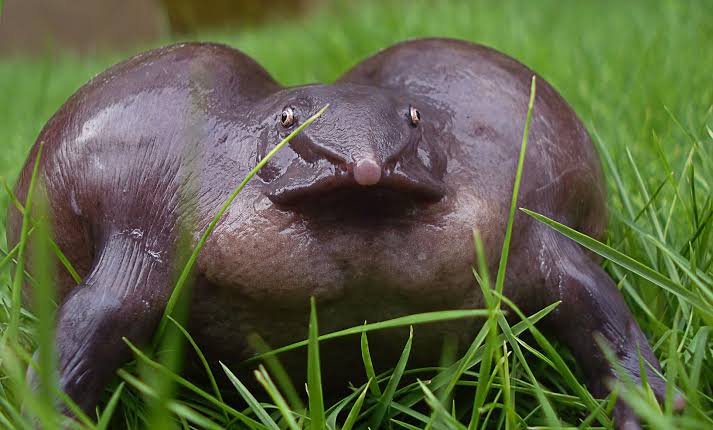
The purple frog is an oddity even among amphibians. In a world where many amphibians are green, brown, or unusually bright shades of red and yellow, these creatures take on an interesting purple color. However, that isn’t all there is to their unusual morphology. A purple frog has a disproportionately little head with little eyes and a pointed snout that blends rather bizarrely with its “bloated” body. This gives it an unsettling look, relative to many strange-looking amphibians.
Purple frogs are mainly found in India where they sometimes serve as food sources for natives. These amphibians are quite elusive, remaining in hiding in burrows for most of their lives. However, they usually come out of their hiding places close to/during mating season. These amphibians thrive on worms, ants, and the like.
Aye-aye:
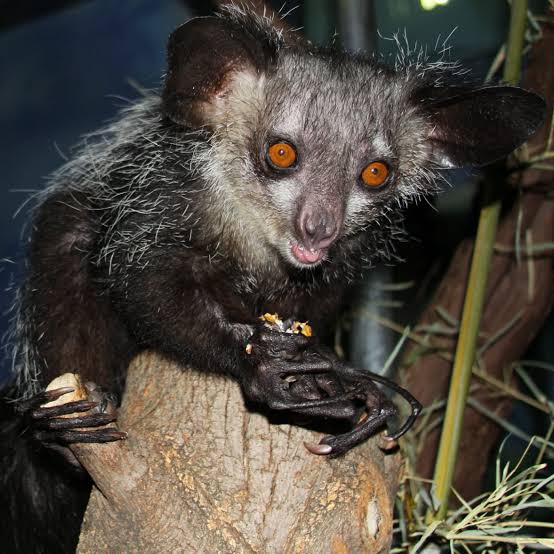
The last animal in this “ugly animals” series is a debatable mention because some think they are cute in a strange way. Beauty is in the eyes of the beholder after all – but I can’t deny these folks have weird taste. I do not see anything cute. Aye-ayes are a type of lemur, primates present only in Madagascar. They have rodent-like dentitions and interestingly shaped middle fingers. Aye-ayes are also the only known primates that use echolocation. They are omnivores that feed on seeds, fruits, insects, and honey.
Contact with this animal is believed by many to be an ill omen or sign of bad luck. People instinctively kill them upon contact and string them up so that the “evil spirit” in them leaves their bodies after death. Weird, and cruel, but understandable, especially in this part of the world. I mean, if you saw something like that in the middle of the night – since they are mainly nocturnal – wouldn’t you assume the same? Many have peed their pants for less.
This practice explains to a reasonable degree, the plummet in their population in recent years. Now, institutions are making conservation efforts to preserve their population. Nonetheless, it is noteworthy that the aye-aye is still an endangered animal.
Enjoyed this? For more wildlife pieces, click here.



Leave a Reply